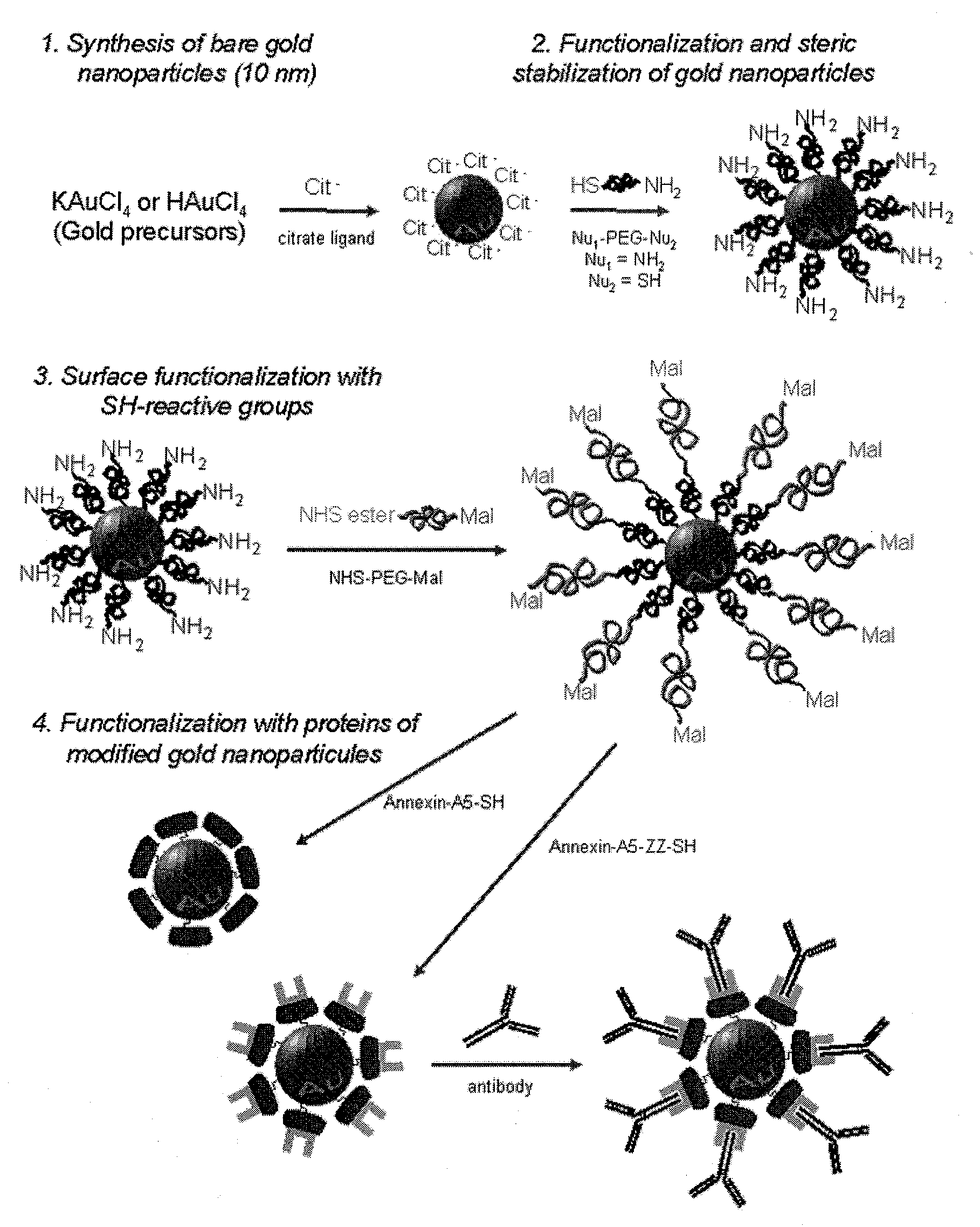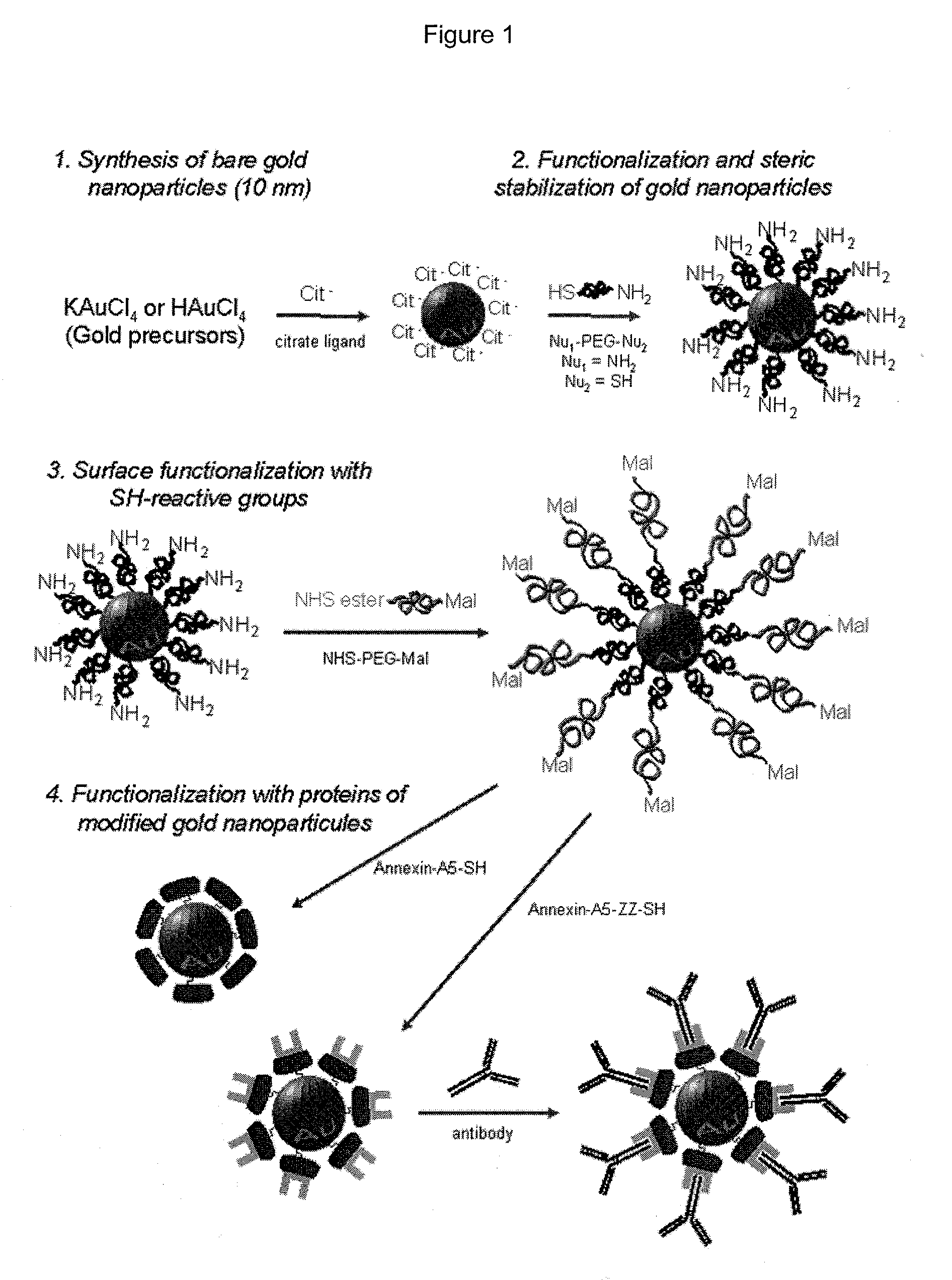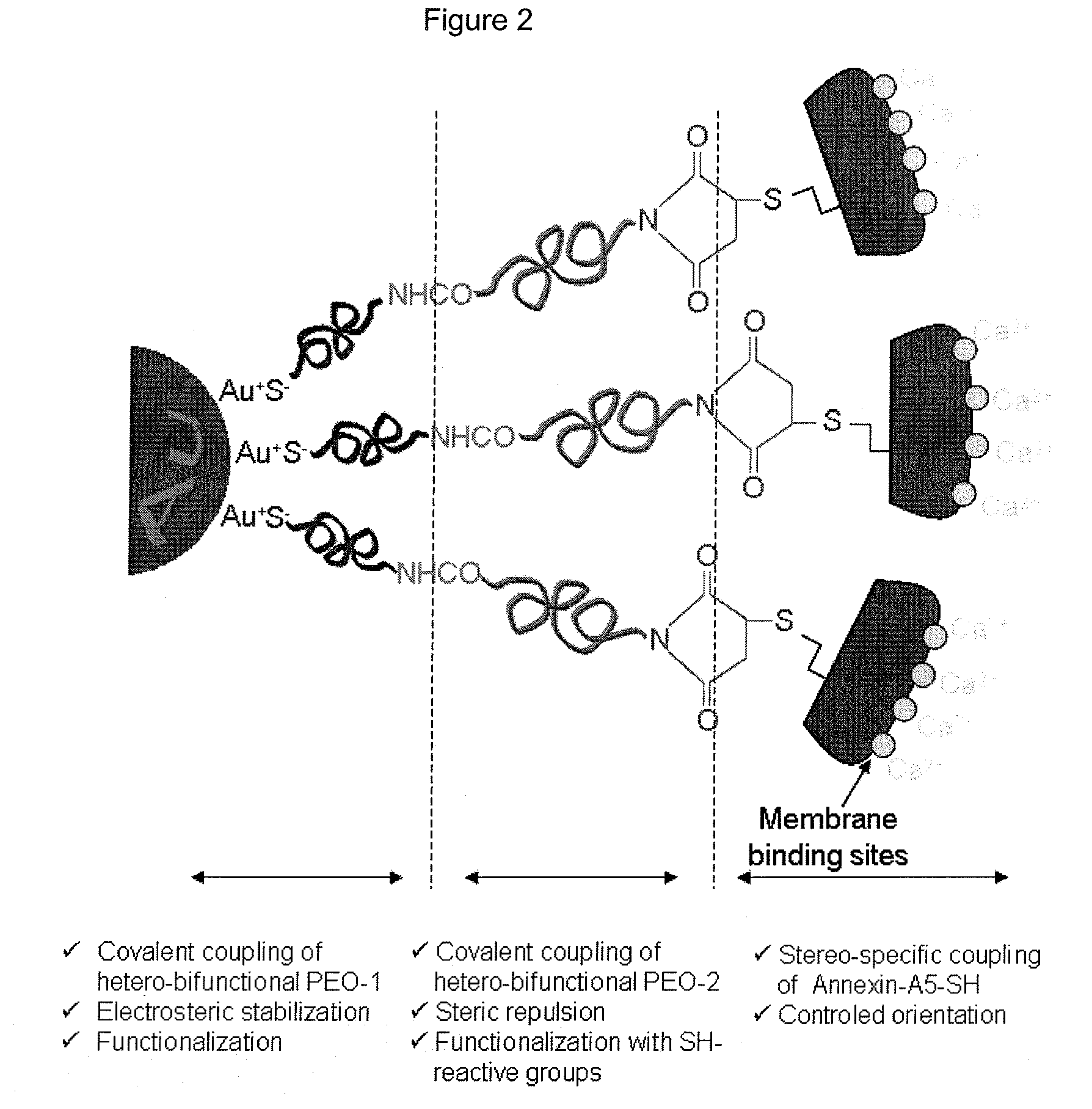Functionalization of gold nanoparticles with oriented proteins, application to the high-density labelling of cell membranes
a technology of oriented proteins and gold nanoparticles, applied in the field of nanoparticles, can solve the problems of direct adsorption approach, loss of biological properties, and partial denaturation, and achieve the effects of reducing the number of adsorption methods, and improving the quality of adsorption
- Summary
- Abstract
- Description
- Claims
- Application Information
AI Technical Summary
Benefits of technology
Problems solved by technology
Method used
Image
Examples
example 1
Synthesis of Aqueous Suspensions of 10 nm-Diameter Gold Nanoparticles, Functionalized Covalently and Stereo-Specifically with Proteins
[0104]1.1 Preparation of 10 nm-Diameter Gold Nanoparticles (solA).
[0105]Gold nanoparticles are prepared according to a method derived from the protocol of Turkevich et al. (25) in which tetrachloroaurate salts (HAuCl4, KAuCl4) are reduced by citrates, leading to the formation of suspensions (called sol hereunder) of 10 nm-diameter gold nanoparticles.
[0106]Typically, for preparing 550 mL of aqueous sol of gold nanoparticles of 10 nm-diameter (FIG. 3B) and for a concentration equal to 32.62 nM of particles (1.964.1016 particles / L, namely 10−3 M Au): a volume of 400 mL of ultrapure water (4 (99.999%, Aldrich) are added. The reaction medium is carried to the water reflux (110° C.). The reduction of auric salts occurs upon addition of 50 mL of 3.4 mM sodium citrate dihydrate solution (99%, Aldrich). The reaction is left 30 minutes to the water reflux and t...
example 2
UV-Visible Absorption Spectroscopy of Suspensions of Gold Nanoparticles
[0123]Measurements of UV-visible absorption spectra of gold nanoparticle suspensions give access to the concentration of gold nanoparticles of SolA, SolAPN, SolAPPmal, SolAPP-A5 and to the quality of these dispersions with respect to their colloidal stability.
[0124]The UV-visible spectrum of 10 nm-diameter gold nanoparticles presents an absorption band at a wavelength λ=520 nm attributed to the plasmon resonance band of gold nanoparticles (FIG. 4). For a given particle size, the optical density is directly proportional to the particle concentration, which is determined by the Beer-Lambert law: O.D.=εp.Cp.l, where O.D. is the optical density, εp the molar extinction coefficient of 10 nm-diameter gold particles (εp=1.086×108 (mole of particules)−1.L.cm), Cp the concentration in mole of particles, L the path length (1 cm).
example 3
Binding of solAPP-A5 Gold Nanoparticles to Supported Lipid Bilayers, by Quartz Crystal Microbalance with Dissipation Monitoring (QCM-D)
[0125]The binding of Anx5-functionalized gold nanoparticles (solAPP-A5), prepared according to example 1.4, to supported lipid bilayers containing PS was measured in a quantitative manner by the QCM-D method (37), according to reference measurements established for Anx5 (17).
[0126]FIG. 5 shows 1) that the kinetics of binding of the solAPP-A5 particles (blue curve) to a (PC / PS, 4:1) supported lipid bilayers saturates, 2) that Anx5-gold nanoparticles bound to a supported lipid bilayer are able to bind PS-containing liposomes, demonstrating that several molecules of Anx5 are bound per solAPP-A5 nanoparticle, 3) that the binding of solAPP-A5 particles is PS-specific, as their binding is only reversed by addition of the calcium chelating agent ethylene-bis(oxyethylenenitrilo) tetraacetic acid (EGTA).
[0127]The mass of Anx5-coupled gold nanoparticles bound ...
PUM
| Property | Measurement | Unit |
|---|---|---|
| size | aaaaa | aaaaa |
| size | aaaaa | aaaaa |
| molar mass | aaaaa | aaaaa |
Abstract
Description
Claims
Application Information
 Login to View More
Login to View More - R&D
- Intellectual Property
- Life Sciences
- Materials
- Tech Scout
- Unparalleled Data Quality
- Higher Quality Content
- 60% Fewer Hallucinations
Browse by: Latest US Patents, China's latest patents, Technical Efficacy Thesaurus, Application Domain, Technology Topic, Popular Technical Reports.
© 2025 PatSnap. All rights reserved.Legal|Privacy policy|Modern Slavery Act Transparency Statement|Sitemap|About US| Contact US: help@patsnap.com



